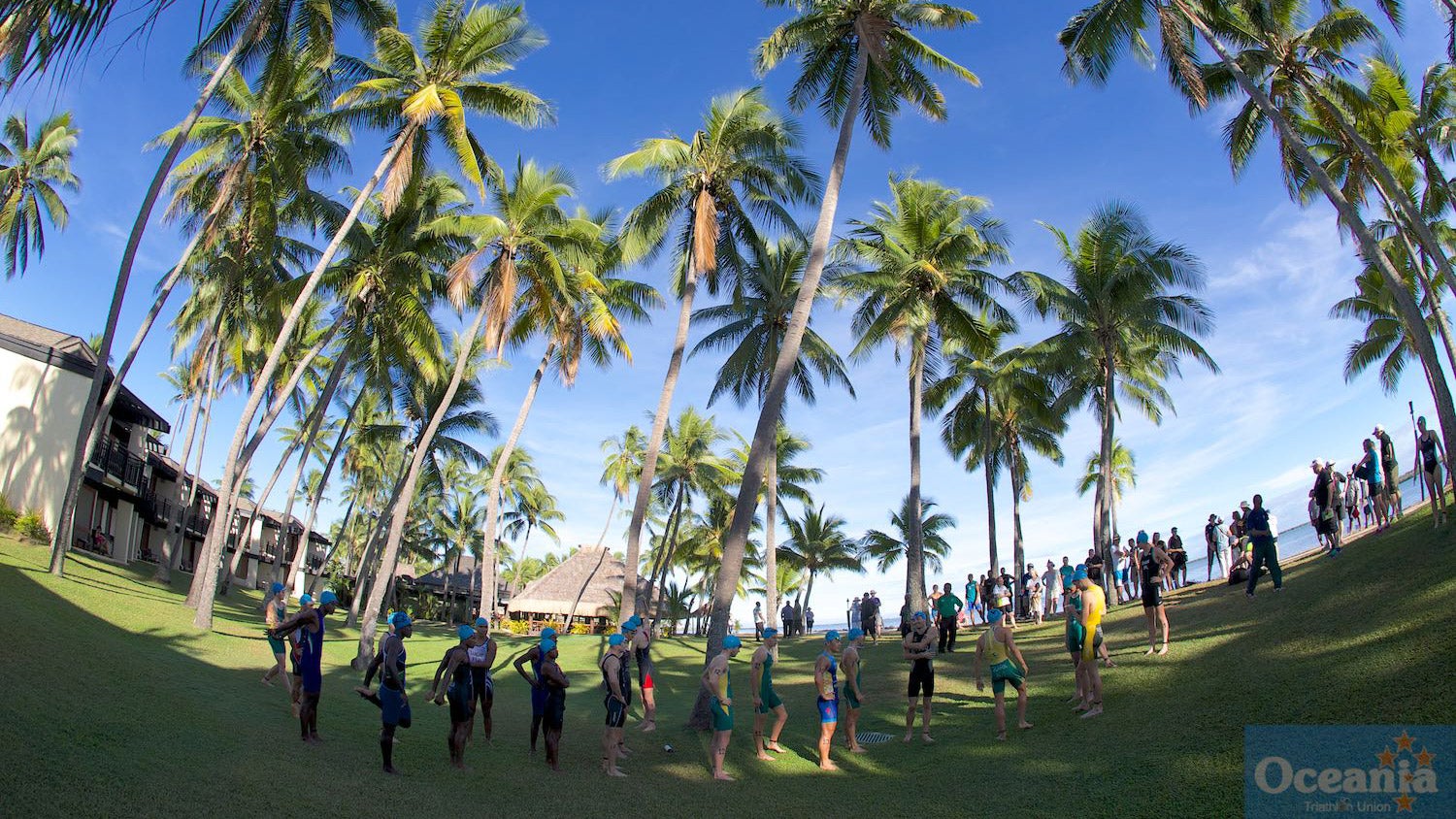Recalled: A Big Prize Purse at the 1995 South Pacific International Triathlon

Triathletes compete in Fiji. Note: This photo is from a race in 2015. (Photo: Triathlon.org)
Wintry weather have you wishing to be transported to a tropical locale? Us, too. For this week’s Recalled column, we’re zipping back to 1995 and heading to the island of Fiji for a look at the very first South Pacific International Triathlon.
When Australian superstar Michellie Jones arrived on the island of Fiji in May 1995, presumably she was there as the heavy favorite to win the brand-new South Pacific International Triathlon–and pick up a hefty portion of the $100,000 prize purse.
But when she showed up to her media obligations, she was told that fellow Aussie Emma Carney, one of her biggest rivals in the sport (and the woman who had snagged the world championship while Jones was sidelined with an injury that year), would be racing, too.
“I didn’t know she was racing until a few minutes ago,” a tight-jawed Jones, then 26, said to the camera in the pre-race footage. “I was completely surprised.”
And so, the inaugural event in Fiji became known as the “South Pacific Showdown:” A battle of the world’s top triathletes at the time in a gorgeous locale. While Aussies filled out the field on the women’s side, the men’s group featured a more international group, including Brit Simon Lessing, Kiwi Hamish Carter, and American Mark Allen, then 37 and in the tail-end of his dazzling and dominant triathlon career, though most of his victories were at the much longer Ironman distance.
“Short races are very aggressive, there’s very little room to make mistakes. It’s very physical,” he said of the Olympic distance. “In the long race, there are a lot more tactics, there’s more pacing. It requires more mental strength.”
The course began on the remote, uninhabited Honeymoon Island and had athletes swimming 1.5K to Denarau Island. There, they proceeded on a five-loop bike route around Fiji’s premiere golf course and later, a two-loop 10K cross-country run along the links. Though steeped in sweeping ocean vistas and swaying palm trees, the circuitous, bumpy course plus the island heat and humidity would make the day as challenging as it was scenic.
Case in point: Carney, then 23, lost her way in the ocean and swam way off-course. She lost nearly two minutes to her rival Jones, who’d tucked into Allen’s wake in the water and drafted off the Ironman star. (The men and women started together.) Carney had to blast away on the bike to reel her back in. “I [was] annoyed because I [wasted] so much time,” Carney said of her faux pas. “I had to chase her.”
Carney caught Jones by the third lap, and they battled back and forth for the remainder of the ride. The two Aussies took off on foot together. Eager to prove her fitness after an injury kept her from a three-peat at the ITU World Champs (she’d won in 1992 and 1993; while Carney won in 1994), Jones tried to run away from Carney. But the former track star had the legs that day and would win with a comfortable, two-minute cushion.

In the men’s race, a trio of 24-year-olds, Lessing, Cater and Australia’s Miles Stewart came off the bike together, with the senior Allen lagging behind. In the end, it was the lanky, black Speedo-clad Lessing that would outrun the pack over Carter and Stewart, showing the form that would ultimately land him on the top step of the ITU World Champs in 1996 and 1998. (It’s worth noting that Allen’s performance that day was simply a tune-up for yet another Ironman World Championship win, his sixth and final, four months later.)

While Allen’s career was winding down at the time, many in the field were just getting started. Jones would go on to win two more ITU world champs (1998 and 1999) and a silver at the 2000 summer Olympics. She eventually pivoted to Ironman, becoming the first Australian woman to win a world championship at the distance in 2006. As for Carney, she’d win another pair of world titles and record a record-setting 12 straight ITU World Cup wins between 1995 and 1997. She was forced to retire from racing in 2004 due to heart problems.
Fiji no longer hosts a pro race, but the Olympic-distance event is still around for age-groupers. The next installment is scheduled for October, 2021.